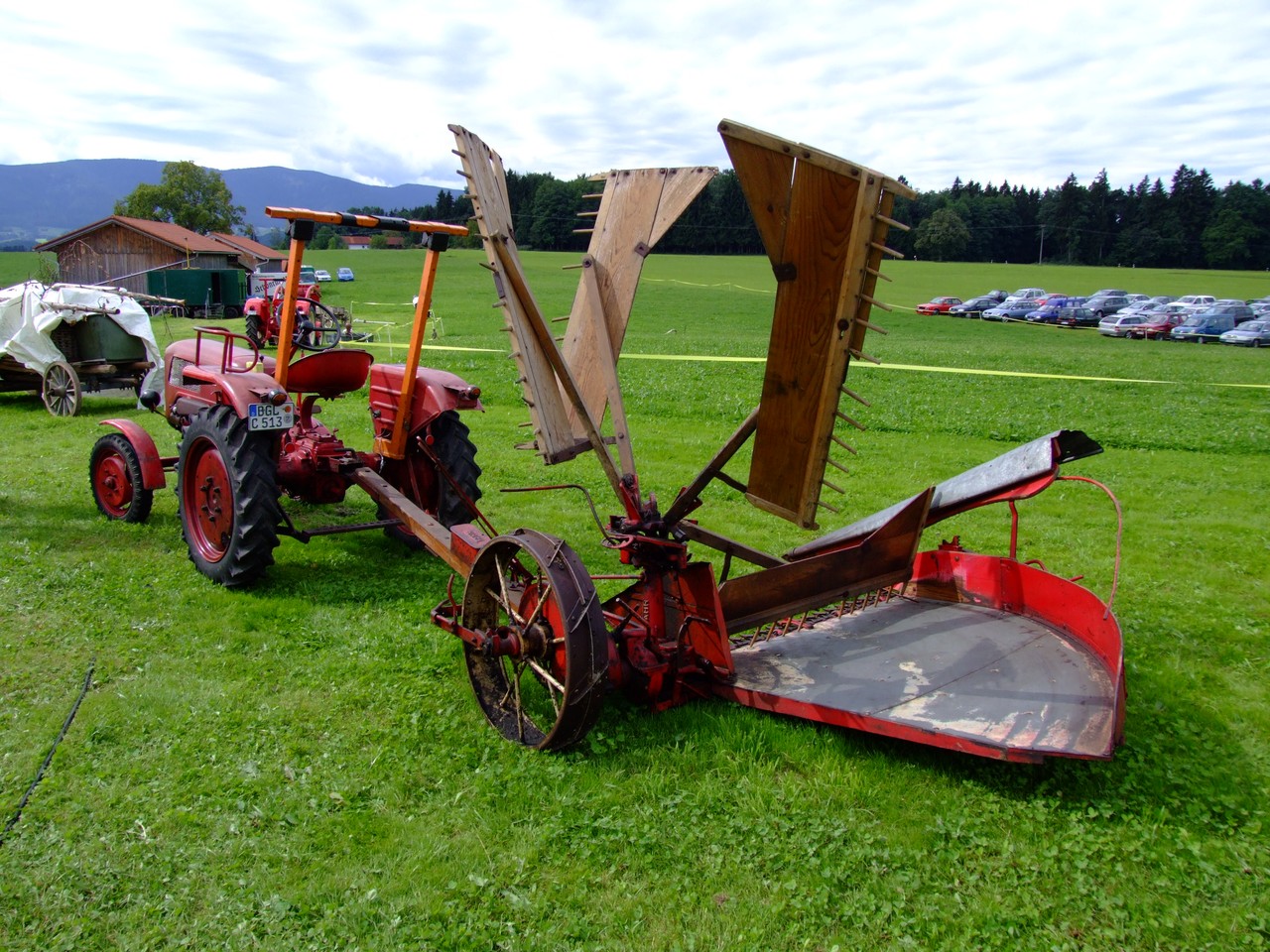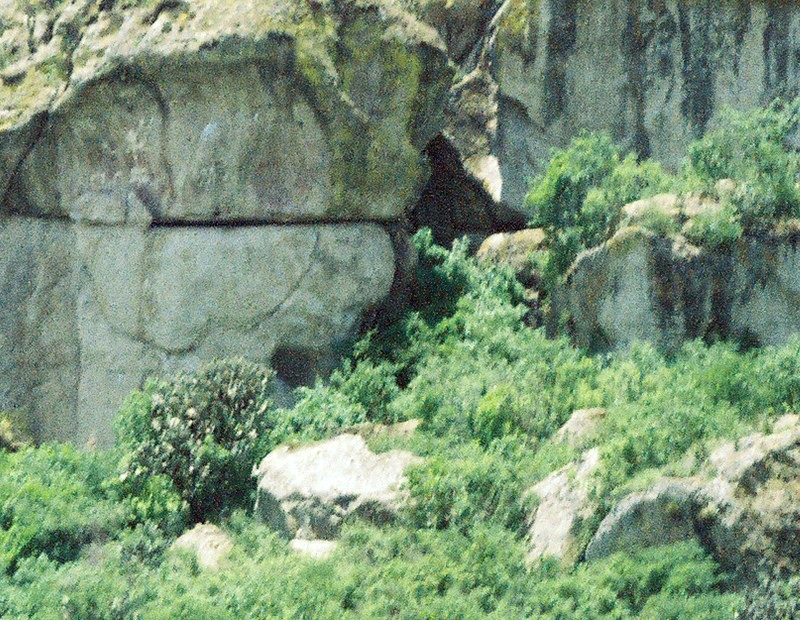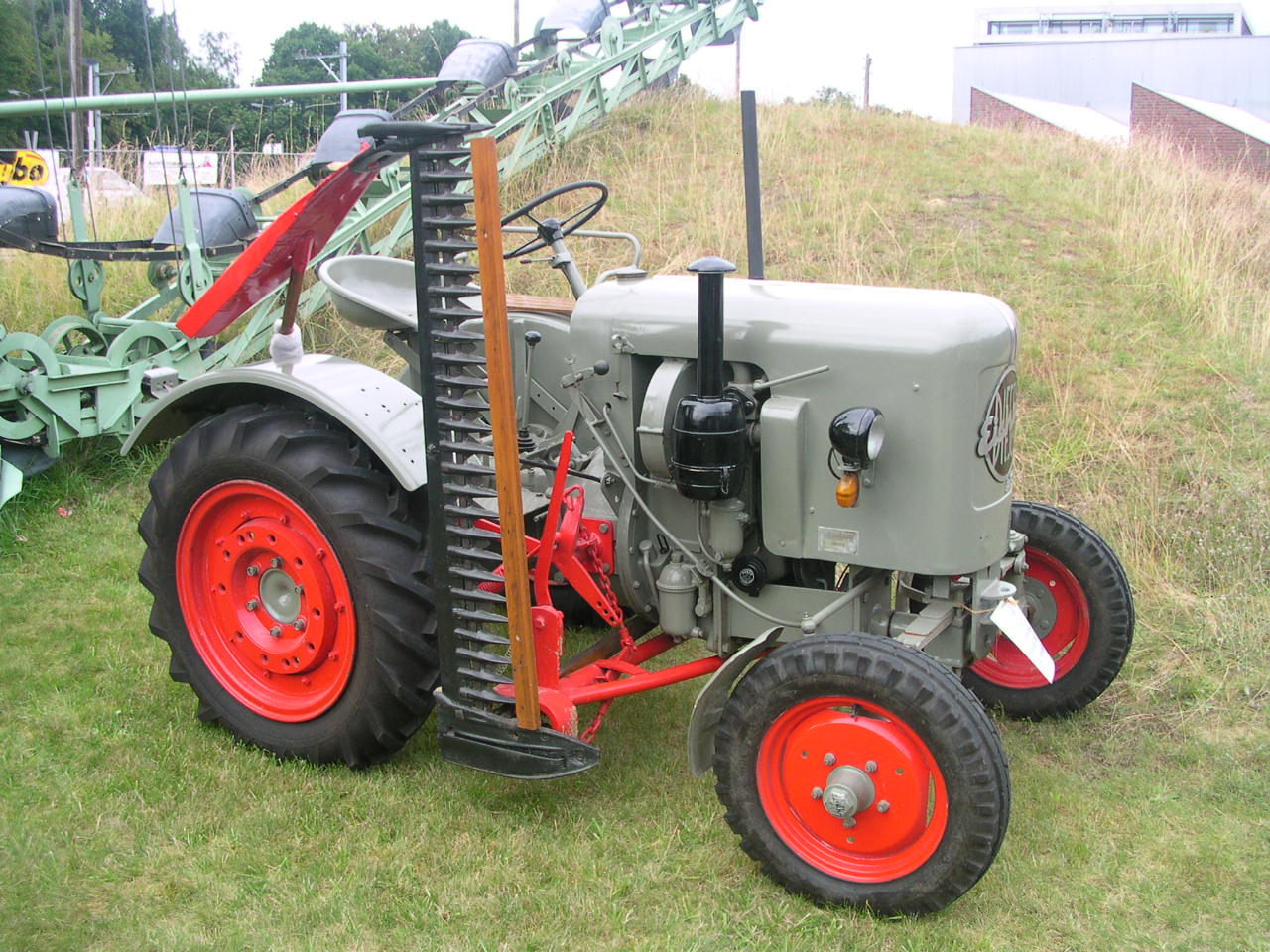|
Reaper-binder
The reaper-binder, or binder, is a farm implement that improved upon the simple reaper. The binder was invented in 1872 by Charles Baxter Withington, a jeweler from Janesville, Wisconsin. In addition to cutting the small-grain crop, a binder also 'binds' the stems into bundles or sheaves. These sheaves are usually then 'shocked' into A-shaped conical stooks, resembling small tipis, to allow the grain to dry for several days before being picked up and threshed. Withington's original binder used wire to tie the bundles. There were problems with using wire and it was not long before William Deering invented a binder that successfully used twine and a knotter (invented in 1858 by John Appleby). Early binders were horse-drawn, their cutting and tying-mechanisms powered by a bull-wheel, that through the traction of being pulled forward creates rotational forces to operate the mechanical components of the machine. Later models were tractor-drawn and some were tractor-powered. (This ... [...More Info...] [...Related Items...] OR: [Wikipedia] [Google] [Baidu] |
Reaper
A reaper is a farm implement or person that reaps (cuts and often also gathers) crops at harvest when they are ripe. Usually the crop involved is a cereal grass. The first documented reaping machines were Gallic reapers that were used in Roman times in what would become modern-day France. The Gallic reaper involved a comb which collected the heads, with an operator knocking the grain into a box for later threshing. Most modern mechanical reapers cut grass; most also gather it, either by windrowing or picking it up. Modern machines that not only cut and gather the grass but also thresh its seeds (the grain), winnow the grain, and deliver it to a truck or wagon, called combine harvesters or simply combines, which are the engineering descendants of earlier reapers. Hay is harvested somewhat differently from grain; in modern haymaking, the machine that cuts the grass is called a hay mower or, if integrated with a conditioner, a mower-conditioner. As a manual task, cutti ... [...More Info...] [...Related Items...] OR: [Wikipedia] [Google] [Baidu] |
Threshing Machine
A threshing machine or a thresher is a piece of farm equipment that threshes grain, that is, it removes the seeds from the stalks and husks. It does so by beating the plant to make the seeds fall out. Before such machines were developed, threshing was done by hand with flails: such hand threshing was very laborious and time-consuming, taking about one-quarter of agricultural labour by the 18th century. Mechanization of this process removed a substantial amount of drudgery from farm labour. The first threshing machine was invented circa 1786 by the Scottish engineer Andrew Meikle, and the subsequent adoption of such machines was one of the earlier examples of the mechanization of agriculture. During the 19th century, threshers and mechanical reapers and reaper-binders gradually became widespread and made grain production much less laborious. Michael Stirling is said to have invented a rotary threshing machine in 1758 which for forty years was used to process all the corn on ... [...More Info...] [...Related Items...] OR: [Wikipedia] [Google] [Baidu] |
Corn Harvesting - Geograph
Maize ( ; ''Zea mays'' subsp. ''mays'', from es, maíz after tnq, mahiz), also known as corn (North American and Australian English), is a cereal grain first domesticated by indigenous peoples in southern Mexico about 10,000 years ago. The leafy stalk of the plant produces pollen inflorescences (or "tassels") and separate ovuliferous inflorescences called ears that when fertilized yield kernels or seeds, which are fruits. The term ''maize'' is preferred in formal, scientific, and international usage as a common name because it refers specifically to this one grain, unlike ''corn'', which has a complex variety of meanings that vary by context and geographic region. Maize has become a staple food in many parts of the world, with the total production of maize surpassing that of wheat or rice. In addition to being consumed directly by humans (often in the form of masa), maize is also used for corn ethanol, animal feed and other maize products, such as corn starch and corn ... [...More Info...] [...Related Items...] OR: [Wikipedia] [Google] [Baidu] |
Wheat
Wheat is a grass widely cultivated for its seed, a cereal grain that is a worldwide staple food. The many species of wheat together make up the genus ''Triticum'' ; the most widely grown is common wheat (''T. aestivum''). The archaeological record suggests that wheat was first cultivated in the regions of the Fertile Crescent around 9600 BCE. Botanically, the wheat kernel is a type of fruit called a caryopsis. Wheat is grown on more land area than any other food crop (, 2014). World trade in wheat is greater than for all other crops combined. In 2020, world production of wheat was , making it the second most-produced cereal after maize. Since 1960, world production of wheat and other grain crops has tripled and is expected to grow further through the middle of the 21st century. Global demand for wheat is increasing due to the unique viscoelastic and adhesive properties of gluten proteins, which facilitate the production of processed foods, whose consumption is ... [...More Info...] [...Related Items...] OR: [Wikipedia] [Google] [Baidu] |
Swather
A swather (North America), or windrower (Australia and rest of world), is a farm implement that cuts hay or small grain crops and forms them into a windrow for drying. They may be self-propelled with an engine, or drawn by a tractor and power take-off powered. A swather uses a reciprocating sickle bar or rotating discs to sever the crop stems. The reel helps cut crop fall neatly onto a canvas or auger conveyor which deposits it into a windrow with stems aligned and supported above the ground by the stubble. A swather does the same task for hay crops as hand scything, cradling and swathing, or mowing and raking. Horizontal rollers behind the cutters may be used to crimp or condition the stems of hay crops to decrease drying time. For grains, as combines replaced threshing machines, the swather introduced an optional step in the harvesting process to provide for the drying time that binding formerly afforded. Swathing is still more common in the northern United Sta ... [...More Info...] [...Related Items...] OR: [Wikipedia] [Google] [Baidu] |
Mower
A mower is a person or machine that cuts (mows) grass or other plants that grow on the ground. Usually mowing is distinguished from reaping, which uses similar implements, but is the traditional term for harvesting grain crops, e.g. with reapers and combines. A smaller mower used for lawns and sports grounds (playing fields) is called a ''lawn mower'' or ''grounds mower'', which is often self-powered, or may also be small enough to be pushed by the operator. Grounds mowers have reel or rotary cutters. Larger mowers or '' mower-conditioners'' are mainly used to cut grass (or other crops) for hay or silage and often place the cut material into rows, which are referred to as '' windrows''. ''Swathers'' (or ''windrowers'') are also used to cut grass (and grain crops). Prior to the invention and adoption of mechanized mowers, (and today in places where use a mower is impractical or uneconomical), grass and grain crops were cut by hand using scythes or sickles. Mower configuratio ... [...More Info...] [...Related Items...] OR: [Wikipedia] [Google] [Baidu] |
Windrow
A windrow is a row of cut (mown) hay or small grain crop. It is allowed to dry before being baled, combined, or rolled. For hay, the windrow is often formed by a hay rake, which rakes hay that has been cut by a mowing machine or by scythe into a row, or it may naturally form as the hay is mown. For small grain crops which are to be harvested, the windrow is formed by a swather which both cuts the crop and forms the windrow. By analogy, the term may also be applied to a row of any other material such as snow, earth or materials for collection. * Snow windrows are created by snow plows when clearing roads of snow; where this blocks driveways the windrow may require removal. Snow windrowed to the centre of the street can be removed by a snow blower and truck. In preparing a pond or lake for ice cutting, the snow on top of the ice, which slows freezing, might be scraped off and windrowed. * Earth windrows may be formed by graders when grading earthworks or dirt roads * Leaf ... [...More Info...] [...Related Items...] OR: [Wikipedia] [Google] [Baidu] |
Canvas
Canvas is an extremely durable plain-woven fabric used for making sails, tents, marquees, backpacks, shelters, as a support for oil painting and for other items for which sturdiness is required, as well as in such fashion objects as handbags, electronic device cases, and shoes. It is popularly used by artists as a painting surface, typically stretched across a wooden frame. Modern canvas is usually made of cotton or linen, or sometimes polyvinyl chloride (PVC), although historically it was made from hemp. It differs from other heavy cotton fabrics, such as denim, in being plain weave rather than twill weave. Canvas comes in two basic types: plain and duck. The threads in duck canvas are more tightly woven. The term ''duck'' comes from the Dutch word for cloth, ''doek''. In the United States, canvas is classified in two ways: by weight (ounces per square yard) and by a graded number system. The numbers run in reverse of the weight so a number 10 canvas is lighter th ... [...More Info...] [...Related Items...] OR: [Wikipedia] [Google] [Baidu] |
Combine Harvester
The modern combine harvester, or simply combine, is a versatile machine designed to efficiently harvest a variety of grain crops. The name derives from its combining four separate harvesting operations— reaping, threshing, gathering, and winnowing— to a single process. Among the crops harvested with a combine are wheat, rice, oats, rye, barley, corn (maize), sorghum, soybeans, flax ( linseed), sunflowers and rapeseed. The separated straw, left lying on the field, comprises the stems and any remaining leaves of the crop with limited nutrients left in it: the straw is then either chopped, spread on the field and ploughed back in or baled for bedding and limited-feed for livestock. Combine harvesters are one of the most economically important labour-saving inventions, significantly reducing the fraction of the population engaged in agriculture. History In 1826 in Scotland, the inventor Reverend Patrick Bell designed (but did not patent) a reaper machine, which used th ... [...More Info...] [...Related Items...] OR: [Wikipedia] [Google] [Baidu] |
John Appleby (inventor)
John Francis Appleby (1840–1917) was an American inventor who developed a knotting device to bind grain bundles with twine. It became the foundation for all farm grain binding machinery and was used extensively by all the major manufacturers of large grain harvesting machines in the late 19th and early 20th centuries. Appleby's knotting device was a major landmark in the mechanization of agriculture and aided the development of the western wheat fields of the United States. Background John Francis Appleby was born in Westmoreland, New York in 1840. In 1844 his extended family of 17 arrived by boat to Milwaukee, Wisconsin. When he was just 18, Appleby invented the basic knotting device that would become the foundation for all farm binding machinery, but no one was interested in the idea at the time. He served with the 23rd Wisconsin Volunteer Infantry Regiment in the American Civil War, from 1862 to 1865. During the war, Appleby invented and patented a manual magazine feed ... [...More Info...] [...Related Items...] OR: [Wikipedia] [Google] [Baidu] |
Power Take-off
A power take-off or power takeoff (PTO) is one of several methods for taking power from a power source, such as a running engine, and transmitting it to an application such as an attached implement or separate machine. Most commonly, it is a splined drive shaft installed on a tractor or truck allowing implements with mating fittings to be powered directly by the engine. Semi-permanently mounted power take-offs can also be found on industrial and marine engines. These applications typically use a drive shaft and bolted joint to transmit power to a secondary implement or accessory. In the case of a marine application, such shafts may be used to power fire pumps. In aircraft applications, such an accessory drive may be used in conjunction with a constant speed drive. Jet aircraft have four types of PTO units: internal gearbox, external gearbox, radial drive shaft, and bleed air, which are used to power engine accessories. In some cases, aircraft power take-off systems also p ... [...More Info...] [...Related Items...] OR: [Wikipedia] [Google] [Baidu] |
Modern Binder
Modern may refer to: History * Modern history ** Early Modern period ** Late Modern period *** 18th century *** 19th century *** 20th century ** Contemporary history * Moderns, a faction of Freemasonry that existed in the 18th century Philosophy and sociology * Modernity, a loosely defined concept delineating a number of societal, economic and ideological features that contrast with "pre-modern" times or societies ** Late modernity Art * Modernism ** Modernist poetry * Modern art, a form of art * Modern dance, a dance form developed in the early 20th century * Modern architecture, a broad movement and period in architectural history * Modern music (other) Geography * Modra, a Slovak city, referred to in the German language as "Modern" Typography * Modern (typeface), a raster font packaged with Windows XP * Another name for the typeface classification known as Didone (typography) * Modern, a generic font family name for fixed-pitch serif and sans serif fonts (for e ... [...More Info...] [...Related Items...] OR: [Wikipedia] [Google] [Baidu] |








